I have the following Nested Set
That results in this tree
1 -
|---- 2 -
| |---- 4 -
| |---- 7
| |---- 8
|----10 -
|---- 9
3 -
|---- 5
|---- 6
13-
|---- 11
|---- 12I have a list of produts SELECT Id, Name ... FROM Products
A many-to-many relationship with the categories. All Categories can have Promotions. Ok now the problem.
Let's say I have a ProductX in the categories 7,8,6. And Promotions in the categories 1,2,3. I need get the closest parent with a promotion per category or until there is no more parents.
The end result should be
CategoryId PromotionPrice
2 price...
3 price...
What I have
WITH Promotions (CategoryId, PromotionPrice)
{
SELECT CategoryId, PromotionPrice
FROM Promotions
}
SELECT CategoryId, PromotionPrice
FROM NestedSet s1
LEFT JOIN NestedSet s2 ON s1.ParentId = s2.Id
LEFT JOIN Promotions p ON s1.CategoryId = p.CategoryId
And then get the Better Promotion (that I know how to do) and apply to the main query SELECT * FROM Products; For each product (so just a simple join).
My problem is that I know I need to use (or I think I need to use) a recursive CTE, but I have no idea how to do that. Since it should only be recursive for each line and only until it find a promotion for that row.
EDIT (I'll try to explain the logic).
ProductId CategoryId
1 7
1 8
1 6
This product have 2 direct parents: 4 (from 7 and 8) and 3 (from 6) I have promotions in the CategoryIds: 1, 2, 3. First round query result
CategoryId ParentId PromotionPrice
7 4 NULL
8 4 NULL
6 3 10
What matters is the ParentId so I can GroupBy ParentId and the result would be
CategoryId PromotionPrice
4 NULL
3 10
Ok, since promotionPrice is NULL I need to go the his parent(in this case 2) so the query above would need to return
CategoryId ParentId PromotionPrice
4 2 NULL
3 NULL 10
Since PromotionPrice is Null I have to check if there is a Promotion for the Category2 so the result would be
CategoryId ParentId PromotionPrice
2 1 15
3 NULL 10
It stops there. In case I removed the promotion from Category2 it should go another round:
CategoryId ParentId PromotionPrice
1 NULL 5
3 NULL 10
at this point since there is no more parents it doesn't matter if PromotionPrice is null or not. The thing is I need to go all the way up trying to find a promotion.
As I'm lookin the SortPath already have all the info, would only need to break it down and recursively go backwards until find a ID that has a promotion, still I'm clueless on how to achieve that.
Hope this helps a bit explaining.
